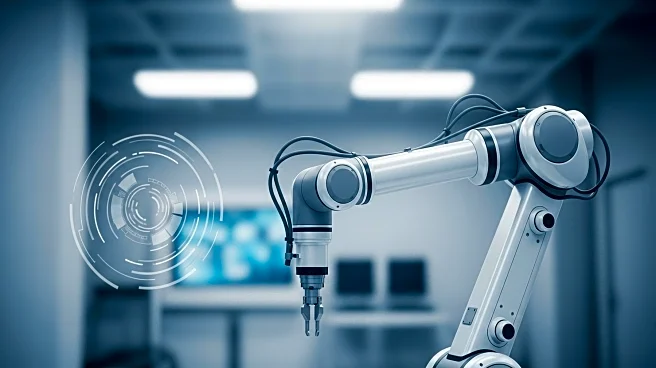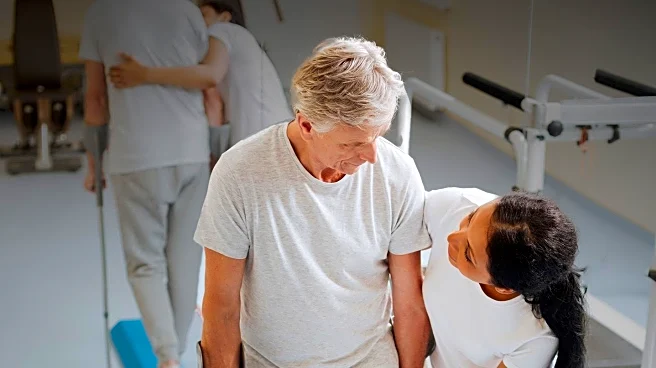What's Happening?
A recent study suggests that altering one's walking gait can significantly reduce knee pain associated with osteoarthritis. Conducted by researchers from the University of Utah, NYU Langone Health, and Stanford University, the study involved training participants to adjust their toe direction slightly inward or outward. This adjustment helps redistribute the load on the knee, potentially alleviating pain. The study, which included 68 participants with mild to moderate osteoarthritis, found that those who altered their gait experienced pain relief comparable to over-the-counter medications. The research highlights the potential of personalized gait training as a non-invasive treatment option for knee arthritis.
Why It's Important?
This study is significant as it offers a potential alternative to traditional pain management methods for osteoarthritis, such as medication and knee braces, which can have side effects or be uncomfortable. With approximately 33 million adults in the U.S. affected by osteoarthritis, this non-invasive approach could provide relief without the risks associated with long-term medication use. The findings could influence future treatment protocols and encourage further research into personalized gait training, potentially benefiting a large segment of the population suffering from joint pain.
What's Next?
The researchers are exploring the development of 'smart shoes' and smartphone applications to facilitate gait training outside of a lab setting. These innovations could make the treatment more accessible to the general public. However, further research is needed to confirm the efficacy of this approach across a broader population and to refine the technology for practical use in physical therapy clinics.
Beyond the Headlines
The study underscores the importance of personalized medicine, as not all patients benefit from the same gait adjustments. This approach could lead to more tailored treatments in other areas of healthcare, emphasizing the need for individualized care plans. Additionally, the research highlights the potential for technology to play a significant role in non-invasive medical treatments.











